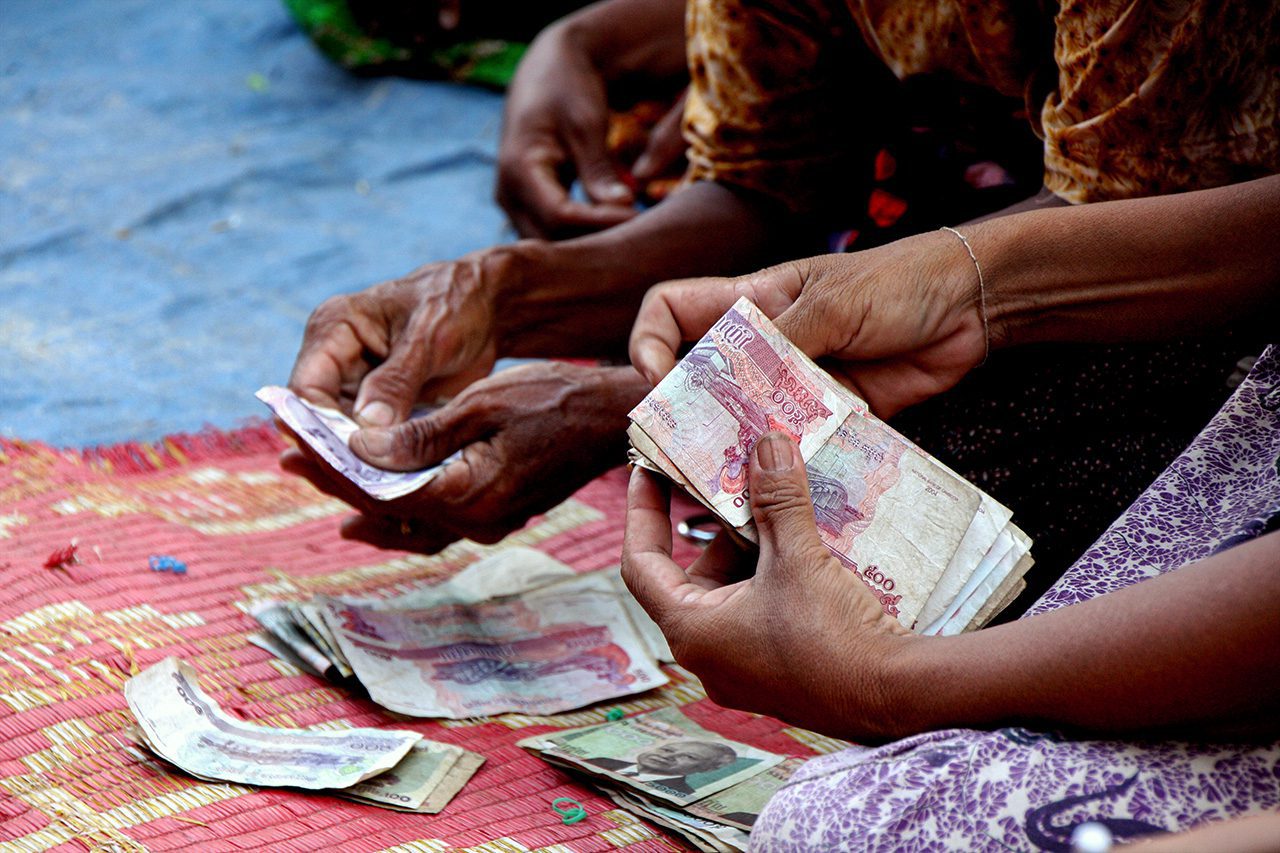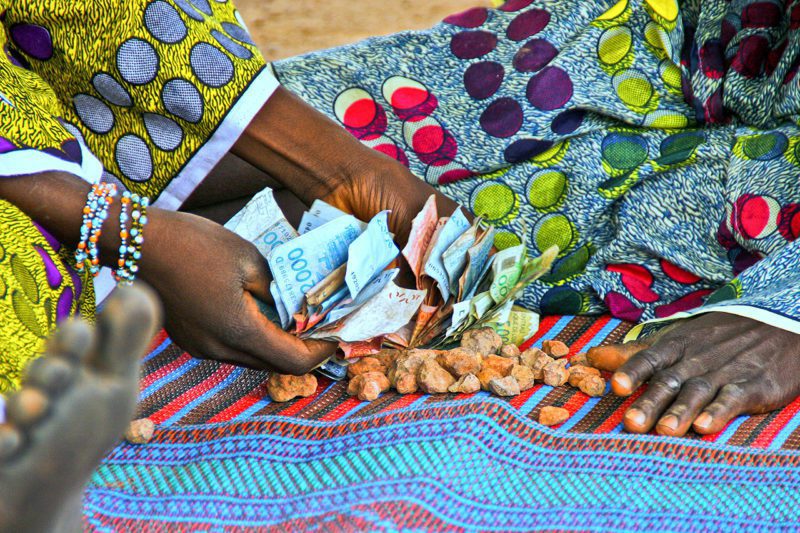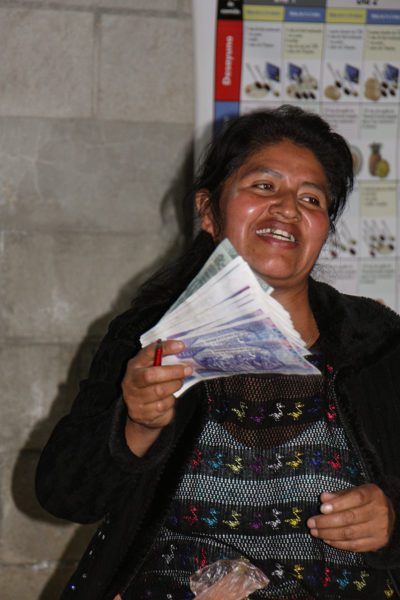The Algorithmic Classroom
South Korea’s ambitious experiment with AI in classrooms holds lessons for the world
What we can learn from informal economies

Savings Group distribution in Cambodia
Three facts:
After working in the financial inclusion trenches for decades, it is humbling and inspiring to learn that villagers, townsfolk, and immigrants are investing hundreds of billions of dollars every year in moving their lives forward in parallel, and with little reference to, our efforts.
What if we spent some of our resources – both technical and financial – to first understand, and then build upon, that understanding by:
For those of us living in the world of institutions, the informal sector, vast as it is, operates invisibly – there are no buildings, or staff or registries, or signage – yet any villager or immigrant can tell you how it works. While our institutional world is governed by laws, the informal economy is based on trust and time-tested traditions of mutual support decentralized into small groups, families, and communities.

Savings Group Distribution in Mali
Understanding the informal economy can start with your next taxi ride, hotel stay, or purchase at a bodega. When you talk to immigrants or travel to developing countries, ask those you meet if they save in small groups and how these groups work. Over the past years, my colleagues and I have asked these questions. What follows is some of what we learned and what we tried.
John Hammock and I from Grassroots Finance Action partnered with the Latino Support Network and its director Hugo Carvajal to increase the number of Guatemalan immigrants saving in cuchubales (the Guatemalan term of savings circles). Lynn is a small city to the North of Boston that is home to forty thousand Central America immigrants, many of them from Guatemala.

The author with Cuchubal members in Lynn, Mass
Our only instruction to the three Guatemalan veteran cuchubal organizers selected by the Latino Support Network was to “train more cuchubales.” Within two weeks they organized three new cuchubales. Only one fifth had been members of cuchubales before. Each dollar paid to the organizers leveraged $66 in new savings.
While our institutional world is governed by laws, the informal economy is based on trust and time-tested traditions of mutual support decentralized into small groups, families, and communities.
Most used their payouts to cancel debts and as a reserve for future expenses. If they could not make a payment, they “did Door Dash for a few days.” They said that being part of their cuchubal had “taught them to save and 90% signed on for the second cycle.”
Lynn was successful because the Latino Support Network had deep ties in the community, and those they selected were experienced cuchubal organizers. What we learned in Lynn could be replicated in any immigrant enclave by following what made Lynn a success.

Savings Group Meeting in Nepal
While Guatemalans call their informal savings circles “cuchubales”, Mexicans call them “tandas”, West Africans “susus”, Nepalis “dhikutis”, and Kenyans “chamas,” every country and every region has its own name for what is essentially the same approach. A group of trusted family, members, neighbors, or coworkers agree to contribute a fixed amount, or multiples of that amount, to a common pot each week or month. Every member in turn receives the total collected that week or month until all have received their payout. The next cycle starts as the previous cycle ends.
In these tight knit communities, not making a payment is “social suicide.” Saving in small groups is in the “air we breathe,” as one immigrant explained. Yet, if someone faces a personal calamity, the others pitch in to help. Everyone understands the rules of the game because they grew up with these groups in their home countries.
For example:
There are hundreds of thousands of groups like these across America wherever immigrants cluster.
Of the $529 billion in remittances immigrants send to their family and relatives in their home towns and villages, three quarters are used to pay for food, housing, education, and health care. The remaining one hundred billion is either saved or invested in asset building activities that generate income and jobs. What’s more, half of remittances go to rural areas where the world’s poorest live. One in nine people globally are supported by funds sent home by migrant workers.
Understanding the informal economy can start with your next taxi ride, hotel stay, or purchase at a bodega.
Yet the impact of remittances on local development could be increased. One of my colleagues from Yemen set up savings circles among Yemeni immigrants living in Michigan. They sent money to trusted relatives to improve access to water and other basic services in their home villages. This is only one example of how immigrants help their home villages. Mexican immigrants have for generations used their “Hometown Associations” to support their home villages.
Of the 4.7 billion adults in developing countries, according to the World Bank’s Findex21 survey on the use of financial services, 2.1 billion did not save at all last year, with most of them the poor and poorest. Without a savings reserve they face nothing but bad choices – going hungry, selling even their productive assets, taking their children out of school, and not getting medical care.
What if we if we included increasing the number of informal savings circles, as we did in Lynn, as a “first step financial inclusion strategy”?

Woman with her distribution, Guatemala
For example, Gervase Adams, who grew up in Northern Ghana, told me about Mary, a susu organizer from his home village. Mary organized ten susus that each paid her $10 a month to manage their funds. In addition, as a service to her community, she organized another ten groups made up of poorer villagers that she was not paid for. With a small investment in Gervase’s local NGO, his team could identify several organizers like Mary, bring them together to exchange ideas on strategies for organizing new groups, send them a stipend through their cell phones, and monitor and document their progress. Then the “Marys” from this project could travel to nearby regions to replicate what they accomplished in other regions.
There are thousands of organizations like Gervase’s that could expand the number saving in ROSCAS and savings groups. With their cushion of savings the new savers would have better choices – less hunger, keeping children in school, getting medical attention, and investing in a business or their farm.
Let’s be clear, very few are going to be catapulted out of poverty through internally generated savings, but they will be taking a significant first step. Our challenge as financial inclusion practitioners is to identify, support, monitor, evaluate and learn from what starts in a few communities. We could build this into a financial inclusion movement focusing on the absolute bottom of the economic pyramid.
If we start by understanding how villagers and immigrants are carrying out their own financial inclusion and add our skills to monitor progress, facilitate the exchange of experiences, evaluate impact, mobilize resources, and link to other institutions, we can build on what the informal sector has achieved on its own. We will learn along the way.
Related Content
Comments
Deep Dives

Featuring
Clarisse Awamengwi
IE Correspondent
July 17 - 12:00 PM EST

Featuring
Russell McLeod
July 24 - 12:00 PM EST
RECENT
Editor's Picks
Webinars
News & Events
Subscribe to our newsletter to receive updates about new Magazine content and upcoming webinars, deep dives, and events.
Become a Premium Member to access the full library of webinars and deep dives, exclusive membership portal, member directory, message board, and curated live chats.
At Impact Entrepreneur, we champion fearless, independent journalism and education, spotlighting the inspiring changemakers building the Impact Economy. Diversity, equity, sustainability, and democracy face unprecedented threats from misinformation, powerful interests, and systemic inequities.
We believe a sustainable and equitable future is possible—but we can't achieve it without your help. Our independent voice depends entirely on support from changemakers like you.
Please step up today. Your donation—no matter the size—ensures we continue delivering impactful journalism and education that push boundaries and hold power accountable.
Join us in protecting what truly matters. It only takes a minute to make a real difference.
0 Comments